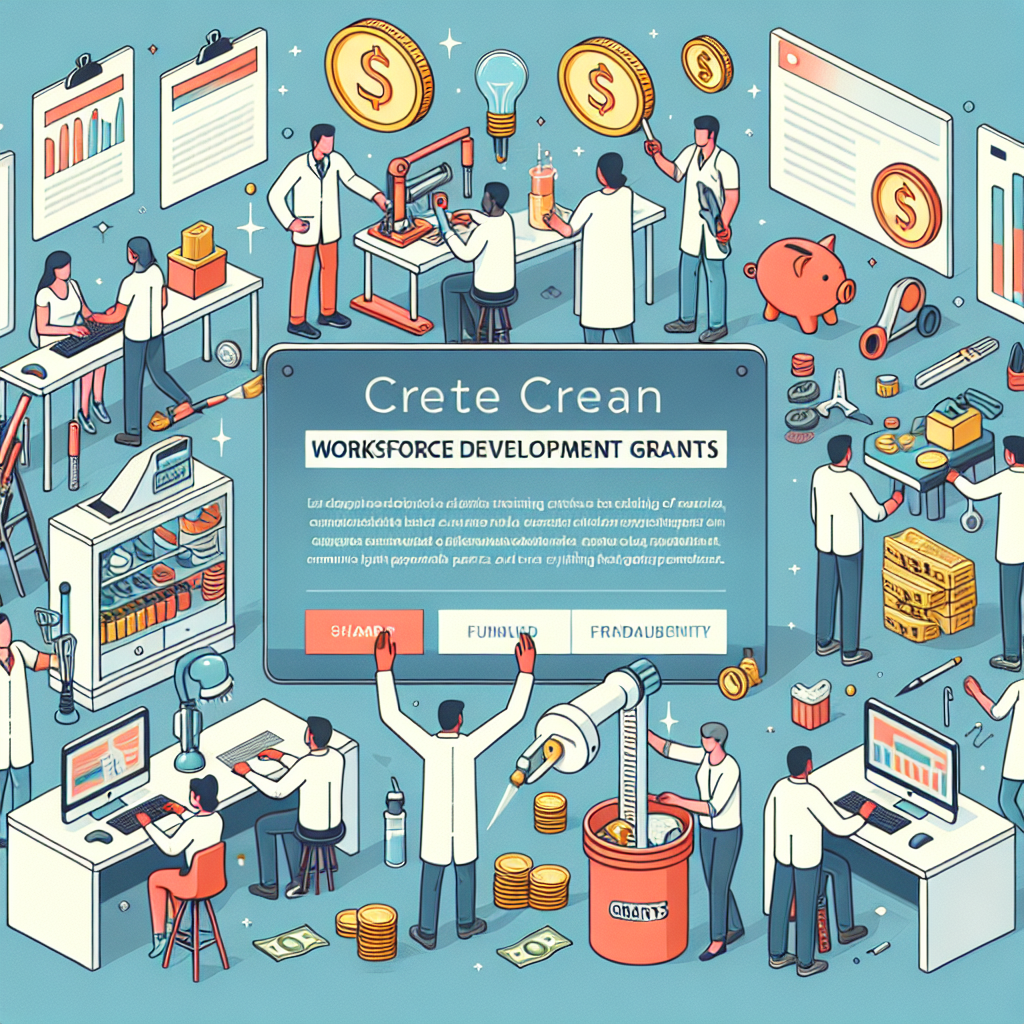Navigating funding opportunities can feel overwhelming, but clear guidance makes it manageable. Workforce Development Grants: The Ultimate Guide explains the types of grants available, how to prepare competitive applications, and practical steps to build programs that connect training with employer demand. Whether you represent a community college, nonprofit, or local government workforce board, this practical walkthrough will help you prioritize funding strategies and plan sustainable workforce initiatives.
Types of workforce funding and who they serve
There are several common categories of workforce grants, each designed for different goals and applicants. Typical offerings include federal formula funds aimed at employment services, competitive grants for sector partnerships and apprenticeships, and private foundation investments that support innovation. Programs often target adults seeking upskilling, dislocated workers, youth, and underrepresented populations, so tailoring your proposal to the intended audience is essential.
Federal and local sources
Federal programs frequently provide the largest pools of funding but typically come with specific performance metrics and reporting requirements. Local and state workforce boards may issue discretionary grants that align more closely with regional employer needs. Foundations and corporate social responsibility programs can be flexible funders for pilot projects, employer engagement, and wraparound supports.
How to prepare a competitive grant application
A strong application demonstrates demand, impact, and capacity. Start by documenting labor market evidence and employer commitments. Outline measurable outcomes like job placement rates, wage gains, credential attainment, and retention. Include a realistic budget, staff roles, and a plan for monitoring and evaluation.
Key components reviewers look for
- Clear alignment with identified workforce needs and in-demand occupations
- Employer partnerships that show commitment (e.g., hiring agreements, apprenticeship slots)
- Data-driven training pathways with stackable credentials or recognized certifications
- Strategies for recruiting and supporting underserved learners, including childcare or transportation solutions
- Scalable plans and sustainability after the grant period ends
Program design best practices
Design programs around equitable access and measurable career outcomes. Use short, industry-recognized training modules combined with on-the-job learning to shorten time-to-hire. Incorporate case management to address barriers to participation and build employer advisory groups to keep curricula current. Pilot small, evaluate rigorously, and iterate before scaling.
Partner roles and responsibilities
Define partner contributions in the application: which organization will recruit learners, who delivers training, how employers provide work-based learning, and who tracks outcomes. Letters of support are important, but concrete deliverables (e.g., paid internships, competency assessments) carry more weight.
Common challenges and mitigation strategies
Grant projects frequently face recruitment shortfalls, employer retention issues, and data collection gaps. Mitigate these risks by setting realistic enrollment targets, building employer incentives (wage subsidies or tax credits where allowed), and establishing automated data-sharing agreements. Invest in staff training for performance reporting early to avoid compliance problems.
Where to research evidence and labor market information
Use authoritative labor market sources to justify occupational demand and wage projections. The Bureau of Labor Statistics provides occupation projections, job outlooks, and employment data that are widely accepted by reviewers and partners. Referencing credible statistics strengthens your case and helps shape program goals.
Bureau of Labor Statistics Occupational Outlook Handbook
Applying internally and collaborating across organizations
Strong internal coordination streamlines proposal development and implementation. Establish a single point of contact for grant activities, set a realistic timeline for deliverables, and use shared project management tools. If you want more tailored resources for internal planning, see our detailed toolkit with templates and sample budgets.
Access the internal grant resources and toolkit
Short checklist before submission
- Confirm alignment with the funder’s priorities and eligibility rules
- Collect signed commitments from employers and partners
- Verify budget math, allowable costs, and matching fund requirements
- Have a peer review or external reviewer assess clarity and feasibility
- Prepare a clear monitoring and evaluation plan with baseline metricsFAQ
Q: Who is eligible to apply for workforce development grants?
A: Eligibility varies by program; common applicants include community colleges, nonprofits, local workforce boards, and government entities. Always review the specific solicitation for eligibility details.
Q: How can small organizations improve their chances?
A: Small organizations can partner with educational institutions or employers to demonstrate capacity, build consortia to share administrative burden, and focus on niche populations or local industries where they have strong relationships.
Q: What metrics do funders typically expect?
A: Funders often expect placement rates, credential attainment, wage gains, and retention at 3–6 months post-placement. Include both short-term and long-term indicators in your evaluation plan



